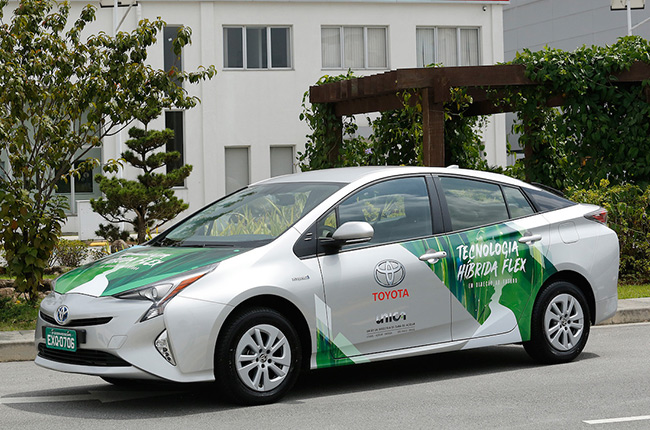
With today's load of sophisticated innovations, you don't know what to call your car anymore. There are those which are fully-electric, there are powered by fuel cell, and there's what you call a hybrid – all on top of the regular, traditional internal combustion-relying vehicle.
Well, Toyota found a new realm to bring the game one level higher than the current. That's because the Japanese automaker just gave birth to the world's first flexible fuel hybrid (Hybrid FFV) prototype car. You thought the world's complicated enough, huh?
So, what's a flexible fuel hybrid, and how does it differ from a regular hybrid system? Simple, it's basically a product of mating Toyota's hybrid system and the flexible-fuel technology. Still vague? You can say an engine is hybrid when it has a combustion engine and an electric motor united under the hood. Meanwhile, the flexible-fuel mill can be powered, not only by gasoline, but alternative fuels such as ethanol.
This prototype by Toyota engineers in Brazil is part of the brand's Environmental Challenge 2050 vision that was established in 2015. Prior product of this green vision was the biosynthetic engine hose introduced in 2016. It's a hose that's made of an unusual rubber called 'biohydrin' that’s claimed to help in reducing CO2 emission.
Going back, the Hybrid FFV is foreseen to popularize hybrid vehicles in Brazil, which in a long-term basis, would help reduce the country's harmful emission. With the integration of flexible-fuel technology, the system would use ethanol, which is a plant-derived fuel and is 100% renewable. It is also known for absorbing CO2 gas, reassuring lesser emission if fused with a hybrid system.
To demonstrate the prototype, Toyota uses the Prius as the base body. According to the company, the Prius is earning quite a reputation in Brazil. Don't ask us about the other parts of the world, though.
“I am very proud of our Toyota do Brasil engineers that worked closely with our engineers in Japan to develop the world’s cleanest hybrid vehicle that uses ethanol for our Brazilian customers. The invention demonstrates our journey in providing a new mobility society.”
Toyota will be gathering data through actual road tests in Brazil. This will help the company to evaluate the system's reliability, durability, and powertrain performance. In addition, the game face is on for the Japanese company, as it aims to attain 5.5 million electrified vehicles globally in 2030. Ganbatte kudasai, Toyota!
Latest News
-
Suzuki Philippines celebrates its top professionals at the 2025 National Skills Competition / News
Suzuki Philippines shows top dealership talent as teams compete in the 2025 National Aftersales Skills Competition.
-
ACMobility, BCDA, and JHMC team up to power sustainable travel in Camp John Hay / News
ACMobility, BCDA, and JHMC partner to boost sustainable travel in Baguio with new EV charging hubs at Camp John Hay.
-
AITO's BGC Experience Center officially opens its doors / News
AITO officially opens its BGC Experience Center, offering buyers a new hub to shop for their next premium ride.
Popular Articles
-
Electric Vehicles in the Philippines for under P1 million
Jerome Tresvalles · Aug 19, 2025
-
Top 3 Cars For Every Lifestyle—What Cars Are Right For You? | Behind a Desk
Caco Tirona · Apr 24, 2024
-
5 Tips to Maximize Fuel Efficiency
Jerome Tresvalles · Sep 09, 2024
-
Five driving habits that are draining your fuel tank
Jerome Tresvalles · Jun 24, 2025
-
Can engine braking harm your engine?
Jerome Tresvalles · Sep 11, 2025
-
Do electric cars even need maintenance?
Jerome Tresvalles · Oct 23, 2024
-
Best vehicles for an active outdoor lifestyle
Shaynah Miranda · Jul 25, 2024
-
How to drive different types of vehicle transmissions
May 23, 2024
-
5 easy ways to keep your car interior clean
Allysa Mae Zulueta · Nov 15, 2021
-
How to survive Metro Manila traffic
Earl Lee · Aug 16, 2022



